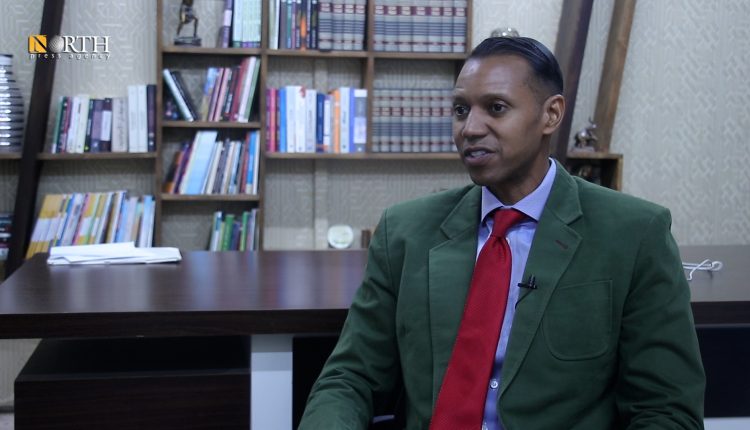Ex-Coalition Spokesman: Continued U.S. Presence Critical for SDF Capabilities Amid Withdrawal Rumors
By Kardo Roj
WASHINGTON, U.S. (North Press) –
Responding to renewed reports of a potential U.S. military withdrawal from Syria, Myles Caggins III, former spokesman for the Global Coalition to Defeat ISIS, stressed the enduring importance of continued U.S. support for the Syrian Democratic Forces (SDF), despite their evolution into a capable and professional fighting force.
Speaking during a webinar organized by the New Lines Institute, Caggins warned that while the SDF and other regional anti-terror units have made “extraordinary progress,” critical capability gaps remain that still require American backing—especially in intelligence, aviation, and logistics.
A Decade of Progress, But Gaps Remain
“America and the global coalition have helped build elite forces in both Iraq and Syria,” Caggins said, citing the SDF alongside Iraqi special forces and Kurdish Peshmerga units. “But there is still maturity needed—especially in high-tech capabilities like drones, intelligence, and rapid air support.”
The remarks come in response to growing speculation surrounding a potential U.S. drawdown from northeast Syria, where Washington provides both military and financial support to the SDF, which leads ongoing operations against ISIS remnants.
In 2023 alone, the U.S. allocated close to $200 million to support the SDF and associated stabilization efforts, including the management of detention centers and internally displaced persons (IDP) camps.
Strategic Partnership Beyond Security
Caggins noted that the SDF not only contributes to regional security but also represents a potential long-term partner in both defense and economic development.
“There’s an opportunity, particularly in Syria, for America to continue to invest—not only in military partnerships but also economic opportunity,” he said, pointing to northeast Syria’s underdeveloped oil fields and the potential for energy cooperation akin to U.S. relations with the Kurdistan Regional Government in Iraq.
He stressed the importance of sustaining stipends and equipment provisions to vetted forces and suggested a “dashed-line relationship” that balances political ambiguity with operational cooperation.
Training the Next Generation
One of the critical concerns highlighted by Caggins is the ongoing need for continuous training. “Troops come in, they go. There are new fighters who need to be trained,” he said. “The best trainers have come from the United States and other coalition partners.”
While praising the SDF’s professionalism, he noted that their institutional development remains in progress and would benefit from further strategic guidance and resources.
Preserving Gains in a Volatile Landscape
As speculation over a potential U.S. withdrawal continues, Caggins’ remarks serve as a reminder of the fragility of recent gains. “We’ve made a huge investment to free this area of ISIS,” he said, suggesting that any disengagement must consider the long-term implications for both regional stability and American strategic interests.
With ISIS cells still active and regional pressures mounting, the continued presence of U.S. forces provides both a deterrent and an anchor for ongoing security cooperation with the SDF.

